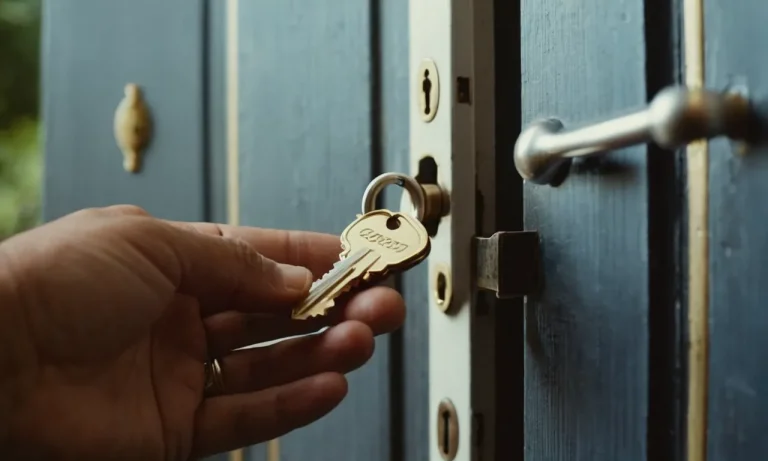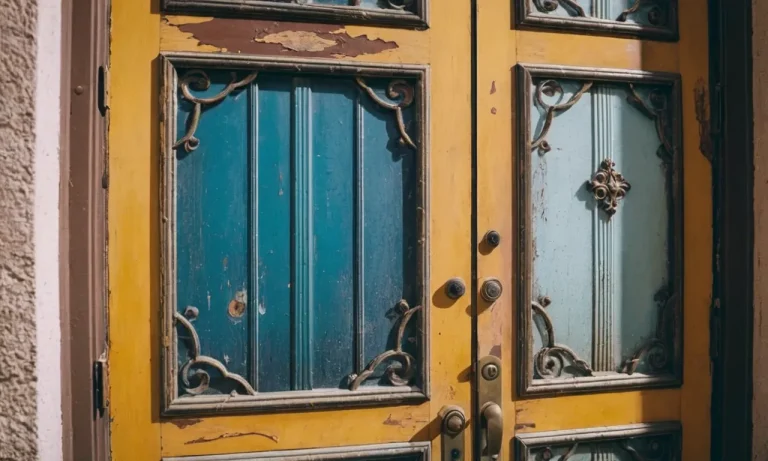How Long Does It Take To Paint A Room? The Complete Guide
If you’re looking to give your home a quick facelift, painting a room is one of the easiest and most budget-friendly ways to do it. But before you break out the paint brushes, you may be wondering – how long does it actually take to paint a room?
If you’re short on time, here’s a quick answer to your question: For an average 10×12 foot room with 8 foot ceilings, plan on 6-8 hours total to prep, paint 2 coats, and clean up. But the time can vary greatly based on room size, prep work needed, number of coats, and drying time.
In this comprehensive guide, we’ll walk through all the factors that determine how long it takes to paint a room from start to finish. We’ll also provide tips to help the project go faster and ensure you get great results.
Factors That Affect Painting Time
Several factors can influence the amount of time it takes to paint a room. By considering these factors, you can better estimate the time needed for your painting project.
Room Size
The size of the room is one of the most significant factors that determine how long it takes to paint. Naturally, larger rooms will require more time to complete. A small bedroom might take a few hours, while a spacious living room could take a couple of days.
It’s important to take into account the square footage of the walls and ceilings when estimating the painting time.
Ceiling Height
The height of the room’s ceiling can also impact the painting time. Higher ceilings may require additional equipment, such as ladders or scaffolding, which can slow down the painting process. Rooms with standard ceiling heights are generally easier and faster to paint compared to those with towering ceilings.
Amount of Prep Work
Preparation is a crucial step in any painting project. The amount of prep work needed can significantly impact the overall painting time. This includes tasks such as cleaning the walls, repairing any damages, sanding, and applying primer.
The more extensive the prep work required, the longer it will take to complete the painting job.
Type of Paint & Primer
The type of paint and primer you choose can also affect the painting time. Certain paints and primers may require multiple coats to achieve the desired finish. Additionally, some paints have longer drying times between coats, which can extend the overall painting process.
It’s essential to read the manufacturer’s instructions and choose products that align with your desired timeline.
Number of Paint Coats
The number of paint coats you plan to apply will also impact the painting time. If you are applying multiple coats, you’ll need to allow sufficient drying time between each coat. Keep in mind that some colors may require more coats to achieve full coverage, while others may only need one or two coats.
Drying Time Between Coats
Allowing adequate drying time between coats is crucial to achieving a smooth and long-lasting paint job. The drying time can vary depending on the type of paint and environmental conditions. It’s important to follow the manufacturer’s recommendations for drying time to ensure a professional-looking finish.
Rushing the drying process can lead to issues such as peeling or uneven coverage.
By considering these various factors, you can estimate the time it will take to paint a room more accurately. Keep in mind that every painting project is unique, and it’s essential to allow for unforeseen circumstances or challenges that may arise during the process.
Painting Process Step-by-Step
Prep Work
Before you start painting a room, it’s important to properly prepare the space. This includes removing furniture or covering it with drop cloths, removing wall decorations, and cleaning the walls to ensure a smooth painting surface.
Additionally, you may need to repair any cracks or holes in the walls and apply a primer if necessary. Taking the time to properly prep the room will result in a more professional and long-lasting paint job.
Paint Ceiling
Once the prep work is complete, it’s time to start painting. Begin by painting the ceiling, as it is typically the largest surface area in a room. Use a roller with an extension pole for easy reach and apply a coat of paint in even strokes.
Depending on the color and texture of the ceiling, you may need to apply a second coat for full coverage. Allow the paint to dry completely before moving on to the next step.
Paint Walls
After the ceiling is painted, it’s time to move on to the walls. Start by cutting in around the edges with a brush, painting a border where the walls meet the ceiling, corners, and trim. This will help create clean lines and prevent paint from getting on areas that shouldn’t be painted.
Once the edges are done, use a roller to apply paint to the rest of the walls in smooth, overlapping strokes. Again, depending on the color and texture of the walls, you may need to apply a second coat for optimal coverage.
Second Coat & Touch-ups
After the first coat of paint is dry, evaluate the coverage and decide if a second coat is necessary. Some colors may require an additional coat to achieve the desired depth and vibrancy. If needed, repeat the process of cutting in and rolling on the second coat.
Once the second coat is dry, take the time to inspect the walls for any missed spots or imperfections. Touch up these areas with a small brush or roller for a flawless finish.
Clean Up
Once the painting is complete, it’s important to properly clean up the space. Remove any remaining drop cloths, put furniture back in place, and rehang wall decorations. Clean your brushes and rollers thoroughly to ensure they can be used again in the future.
Dispose of any empty paint cans or other materials responsibly. Finally, step back and admire your freshly painted room!
For more detailed instructions and tips on painting a room, you can visit websites such as DIY Network or Better Homes & Gardens.
Tips for Painting a Room Faster
Use Paint & Primer in One
One of the best ways to save time when painting a room is to use a paint and primer combination. This eliminates the need to apply a separate primer coat, saving you both time and effort. Paint and primer in one products are designed to provide good coverage and adhesion, so you can achieve a professional-looking finish in less time.
Only Tape Off What’s Necessary
While it’s important to protect surfaces that you don’t want to get paint on, such as baseboards and trim, taping off every edge and corner can be time-consuming. Instead, focus on taping off only the areas that are at risk of getting paint on them.
This will help you save time and make the painting process more efficient.
Use an Extension Pole and High Quality Roller
Using an extension pole with your roller can significantly speed up the painting process, especially when it comes to painting walls and ceilings. It allows you to reach high areas without the need for a ladder, saving you time and effort.
Additionally, investing in a high-quality roller will help you apply paint more evenly and smoothly, reducing the need for touch-ups and saving you time in the long run.
Paint Ceiling & Walls Simultaneously
To further speed up the painting process, consider painting the ceiling and walls simultaneously. This technique allows you to avoid waiting for one surface to dry before moving on to the next, effectively cutting down on the overall painting time.
Just make sure to use a drop cloth or plastic sheeting to protect the floor and furniture from any accidental drips.
Apply Paint Evenly
When applying paint, it’s important to do so evenly to achieve a smooth and professional finish. This can help you avoid having to go back and touch up uneven spots later on, saving you time. Use long, even strokes with your brush or roller, and make sure to distribute the paint evenly across the surface.
Minimize Trips Up and Down Ladder
If you need to use a ladder while painting, try to minimize the number of trips up and down. Plan your painting route in advance and gather all the necessary tools and materials before starting. This will help you stay focused and efficient, saving you time and energy.
Open Windows for Faster Drying
Opening windows during and after painting can help speed up the drying process. Increased airflow can help the paint dry faster, reducing the waiting time between coats or before moving furniture back into the room.
Just make sure to close the windows if it’s raining or if the weather conditions are not suitable.
Start Early In the Day
Starting your painting project early in the day can give you a head start and allow you to take advantage of natural daylight. This can help you see any imperfections or missed spots more easily, enabling you to fix them before the paint fully dries.
Additionally, starting early can give you more uninterrupted time to focus on the task at hand.
By following these tips, you can significantly reduce the time it takes to paint a room while still achieving professional-looking results. Remember, practice makes perfect, so don’t be discouraged if it takes a bit of time to get the hang of it.
With each project, you’ll become more efficient and confident in your painting skills.
Hiring a Professional Painter
When it comes to painting a room, many people choose to hire a professional painter. While some may prefer to take on the task themselves, hiring a professional can offer numerous benefits. This section will discuss the pros and cons of hiring a painter, the cost associated with it, and important questions to ask before making a decision.
Pros & Cons of Hiring a Painter
One of the main advantages of hiring a professional painter is the quality of work they can deliver. With their expertise and experience, they can ensure a flawless finish and attention to detail that may be difficult to achieve for someone without the same level of skill.
Additionally, professional painters often have access to high-quality materials and tools, further enhancing the overall result.
Another benefit of hiring a painter is the time and effort it saves. Painting a room can be a time-consuming process, especially if you have a busy schedule or lack the necessary skills. By hiring a professional, you can free up your time and let them handle the job efficiently and effectively.
On the flip side, there are a few cons to consider when hiring a painter. The cost is one factor that can deter some individuals. Hiring a professional painter can be expensive, especially if the room is large or requires intricate work.
However, it’s important to weigh the cost against the convenience and quality of the finished product.
Cost to Hire a Painter
The cost of hiring a professional painter can vary depending on several factors. These factors include the size of the room, the complexity of the project, the painter’s experience and reputation, and the location.
On average, homeowners can expect to pay between $500 and $3,000 for a room painting project. It’s always a good idea to obtain multiple quotes from different painters to ensure you are getting a fair price.
It’s worth noting that while hiring a painter may seem expensive upfront, it can save you money in the long run. A professional painter will use high-quality materials and techniques that can prolong the lifespan of the paint job, reducing the need for touch-ups or repainting in the near future.
Questions to Ask Before Hiring
Before hiring a professional painter, it’s essential to ask a few key questions to ensure they are the right fit for your project. These questions may include:
- Are you licensed and insured?
- Can you provide references or examples of previous work?
- What type of paint and materials do you use?
- How long do you anticipate the project will take?
- Do you offer a warranty or guarantee on your work?
By asking these questions, you can gain a better understanding of the painter’s qualifications, experience, and professionalism. This will help you make an informed decision and ensure that your room painting project is in capable hands.
Conclusion
Painting a room may seem daunting, but breaking the project down into logical steps makes it much more manageable. While the time needed can vary based on room size, amount of prep, and other factors, you can expect to spend 6-8 hours prepping, painting, and cleaning up a typical 10×12 foot room.
Following the tips in this guide will help streamline the process so you can enjoy your fresh new paint job as soon as possible. Just remember – proper prep work leads to better results. So take your time taping off trim, patching holes, and cleaning surfaces before opening that first can of paint.
If you want to save time or just don’t want the hassle, consider hiring a professional painter. They have the skills and tools to paint most rooms in just one day. Just be sure to get multiple quotes and ask the right questions when interviewing potential painters.







